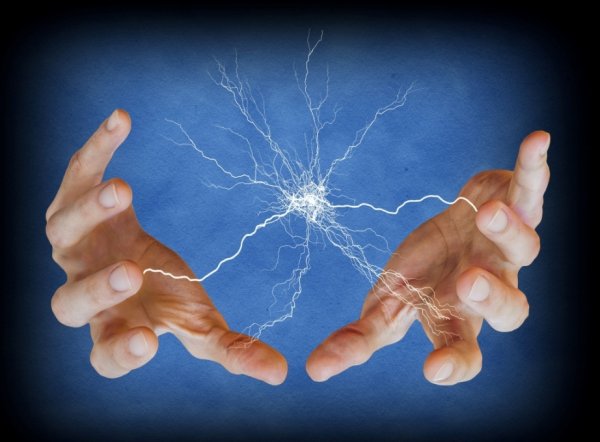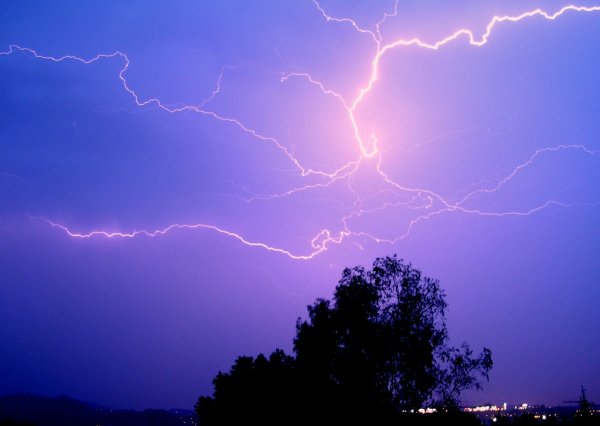ESD protection in production processes
Electric shock to a person can occur as a result of exposure to static electricity.
Static electricity — this is frictional electricity, which arises due to the physical phenomenon of electrification during the friction of a dielectric and a conductor, when dielectrics rub against each other, when a dielectric is fragmented, when a dielectric is struck, when it breaks.
The process of accumulation and disappearance of charges from static electricity occurs slowly, gradually. Distinguish between static electricity resulting from the running of various technological processes and atmospheric static electricity.
In practice, static electricity is generated:
- when transporting liquid dielectrics through pipelines;
- when filling and emptying tanks with oil products;
- when moving paper in paper cutting machines;
- in the production of rubber glue in glue mixers;
- during operation of spinning and weaving machines, when threads move on a metal surface;
- when working with belt drives;
- when gases move through pipelines;
- in rooms with a lot of organic dust;
- in many other technological processes,
- when a person wears clothes made of silk, wool, nylon, lavsan, nylon, etc.
During manufacturing processes, static electricity charges must be discharged into the ground or neutralized in the air.
If this does not happen, then the charges accumulated on individual metal parts of the equipment create high potentials relative to the ground, which can reach values of several tens of thousands of volts.
This causes static electricity to discharge through the human body, causing damage to the nervous and cardiovascular systems.
In addition, static electricity charges damage products, spoil raw materials and materials, and slow down the progress of technological processes.
Static spark discharge can cause an explosion or fire if it occurs in a combustible environment (combustibles and oxidizing agents), which can lead to serious property damage and personal injury.
In such industries, it is imperative to implement special protective measures that reduce the potential of static electricity relative to earth to safe values.
Measures should also be taken to protect the personal protection of people serving such industries from the accumulation of static electricity charges.
In industrial processes, to prevent the formation of sparks from static electricity, many different technical measures are taken to reduce high electrostatic potentials to safe values. These include the following activities:
1.3 Grounding of metal parts of the equipment, which in most cases is the most reliable method of protection
In this case, static electricity flows to ground. Earthing of various tanks, gas tanks, oil pipelines, coal conveyors, unloading devices, etc. must be performed in at least two points.
Tanker trucks, aircraft are connected to a special earth electrode during unloading and refueling. On their way, the tankers are grounded with a special metal chain.
Metal ears of rubber hoses for pouring flammable substances, metal funnels, barrels and other containers when filling them must be grounded.
The resistance of the grounding device in all cases should not exceed 100 ohms. As a rule, the grounding of the protection against static electricity is combined with the protective grounding of electrical equipment.
2. General or local humidification of the air or the surface of an electrifying material, which helps to neutralize static electricity charges
3. The use of materials that increase the electrical conductivity of dielectrics
For example, coating the surface of the belt adjacent to the pulley with a special electrically conductive compound (82% carbon black and 18% glycerin). The electrical conductivity of petroleum products is increased by introducing antistatic additives.
4. Reducing the ability of dielectrics to electrify
This is facilitated by filling apparatus, containers, closed transport devices with inert gas, limiting the speed of gas, liquid petroleum products, dust through pipelines, reducing the number of valves, valves, filters along pipelines, banning the filling of flammable and combustible liquids in containers with a free-falling stream, preventing their violent agitation, etc.
5. The use of enhanced ventilation in rooms with a large amount of organic dust
6. The use of neutralizers of static electricity, which is the most effective way of protection in fire and explosive areas
The most common are three types of neutralizers:
a) Induction converter
It aims to reduce the density of static electricity charges in the stream of electrifying liquid before it flows out of the pipeline into the tank and is installed for this purpose on pipelines with a diameter of 20 to 100 mm.
b) High Voltage Neutralizer
Designed to neutralize electrical charges at high speeds of movement of electrifying material. The neutralizer consists of a special installation with high voltage and limiters. When a high-voltage installation is installed, the air near the spark gap needle is ionized, and static electricity charges are neutralized in this area.
c) Radioactive neutralizer
Designed to neutralize electrical charges at high velocities of electrifying material. The neutralizer creates a zone of air ionization due to alpha or beta - radioactive radiation, in which static electricity charges are neutralized.
The main part of the neutralizer is a metal plate covered with a thin layer of radioactive substance and placed in a metal housing, which also directs the radiation to the surface of the electrifying material.
7. The discharge of static electricity charges accumulated on people is carried out by means of conductive floors or grounded areas, by grounding the handles of devices, devices, machines and doors
Service personnel are recommended to use antistatic (conductive) shoes and clothing; it is forbidden to wear wool, silk, artificial fibers, as well as rings and bracelets during work. To notify personnel of the occurrence of hazardous electrostatic charges, static electricity alarms providing audible and visual hazard signals should be used.
Discharges of atmospheric static electricity, manifested in the form of lightning, pose a particular danger to people.
Lightning is a discharge of static electricity that occurs between storm clouds and the ground or between clouds.
Lightning is dangerous because of possible direct strikes and its secondary effects. In the case of direct lightning strikes, partial destruction of bricks, concrete, stone, wooden structures of buildings and facilities is possible, as well as the occurrence of fires and explosions when lightning comes into contact with flammable and combustible materials and substances. This can lead to great material losses and pose a threat to people's lives.
Secondary manifestations of lightning include the occurrence of electrostatic and electromagnetic induction, as well as the deflection of high potentials.
In both cases, high induced potentials can cause spark discharge and cause fire or explosion if this occurs in fire or explosive areas.
The drift of high potentials is the transfer of high potentials in buildings or structures through the conductors of overhead power lines, suitable for them communication lines, during direct strikes in them, as well as as a result of electromagnetic induction during a lightning strike to the ground.
In this case, spark discharges from electrical wiring, plugs, switches, telephone and radio devices, etc. to the ground or grounded elements of the building, which is very dangerous for people there.
In electrical installations, the overvoltage resulting from a lightning strike can lead to the destruction of the insulation of the electrical equipment, to possible damage, a long interruption of the power supply to consumers.
Therefore, every building and structure must be protected from direct lightning strikes by means of special devices — lightning rods, and from its secondary manifestations — the use of a number of special technical protective measures (discussed above).
More about lightning:
What is lightning and how does it occur?




